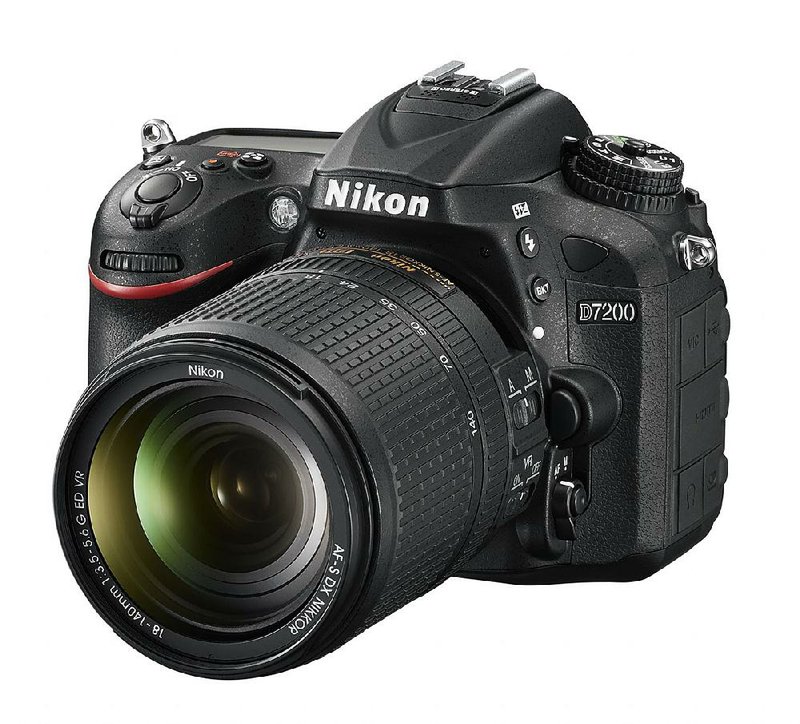I love it when a product wins me over.
In testing the Nikon D7200 DSLR camera last week, I started out a bit skeptical. I happen to use a predecessor, the D7000, frequently, so I was interested in seeing the changes made in the D7200. There are several changes. At first, I wasn't sure I would like it, but the more I used the camera, the more I liked the changes.
where it’s @
The Nikon D7200 DSLR camera requires a smartphone with NFC and/or Wi-Fi capabilities for wireless photo transfers. The camera retails for $1,199 for the body only or $1,699 for the kit with an 18-140mm lens (currently on sale for $1,499). More information is available at www.nikon.com.
The most significant change is the Wi-Fi and Near Field Communication capabilities. The camera has both built in, so you can connect to a smartphone through a wireless signal or NFC, commonly found in Android phones such as those from Samsung. The iPhones lack NFC, so it took a few more steps to set it up with the camera. The Wi-Fi and NFC features worked really well, but they also ran the camera's battery down quickly.
Both wireless features required the Nikon WMU app to work with the camera. The great thing is, the app not only allows you to view photos on the camera but it also allows you to take a photo remotely. That's a good thing, because once again, Nikon has buried the wireless remote shooting mode in the menus, rather than having it on the shooting mode dial like on the D7000. The problem with this is the shooting mode returns to whatever is on the dial if the camera goes into standby mode. Having to restart the remote capabilities got old quickly.
Another thing removed was the autofocus-area point readout on the LCD screen on top of the camera. This allowed you to see the focus points as you set it to a center-point focus or a broader focus using several points. The readout can still be seen by looking through the viewfinder, but it's a little awkward to hold up the camera, press the autofocus button on the front and left side of the camera near the lens, then rotate the dial on the far right. It can be done, and it may just be that I'm too used to looking down on the top screen. It required an adjustment on my part.
Probably the biggest change is the autofocus. I will not lie, the D7000 I use has a few autofocus issues, such as not focusing exactly where the autofocus locked. I was curious to see how the autofocus was with this camera. The D7200's autofocus was dead-on. I even tried the camera with some of my personal lenses, rather than the 18-140mm lens that came with the D7200. The D7200 didn't hesitate on autofocus, producing sharp images, even at really, really high ISOs.
The only time I didn't get sharp images was in macro mode, but that may be part of the macro scene setting. Many macro photos have softened backgrounds. The D7200 does a great job of producing that, but sometimes that softness bled too far forward and softened some of the foreground. A little magic in my photo processing software usually solved the slight issue.
Changes aside, the real question is whether the camera produced nice photos. This is where it won me over.
I tested the camera in low light, terrible light and good light. I tested various shooting modes. I tried to use it the way a serious hobbyist would, since that is likely the target for a camera of this caliber. The D7200 produced incredibly rich color and a surprising sharpness.
It impressed me in shadows and low light. In such instances, it's usually necessary to increase the ISO setting. Unfortunately, this usually increases the appearance of dots, or grain. I was able to crank the ISO fairly high before hitting serious grain. I took a photo or two at an ISO of 12,800, which is ridiculously high. While it was very grainy as expected, the photo was still usable and had more sharpness than I expected.
Bottom line, the D7200 has a couple of minor details that gave me pause, but the resulting images made it more than worth it. Images were incredibly sharp with beautiful, rich color. The built-in wireless capabilities are nice bonuses, but it's the photos that count. (Those who wish to see samples can check out the D7200 album on Facebook at www.facebook.com/pages/Tech-Spotlight-column/143770982301273.)
Also, I have a bit of an update from a previous column. I spoke recently about the Petcube, a camera with a built-in laser pointer that, when used with its app, allowed the user to play with his pet remotely and view the pet while the owner was away. I mentioned that I wasn't able to check the sound feature, because the app crashed when I tried.
I'm happy to say the Petcube app has been updated since that review, and the sound feature now works just fine. There is a bit of a delay to it, which isn't surprising since it's over the Internet. However, I was able to hear what was going on in the room as well as speak to my cats remotely. They were thrilled, I could tell. The twitching of the whiskers during their afternoon nap really showed a lot of affection for my voice.
So it looks like I've had some pretty good luck with cameras. I hope that trend continues, because there is one more to come.
Melissa L. Jones can be reached via email at [email protected].
SundayMonday Business on 08/03/2015

